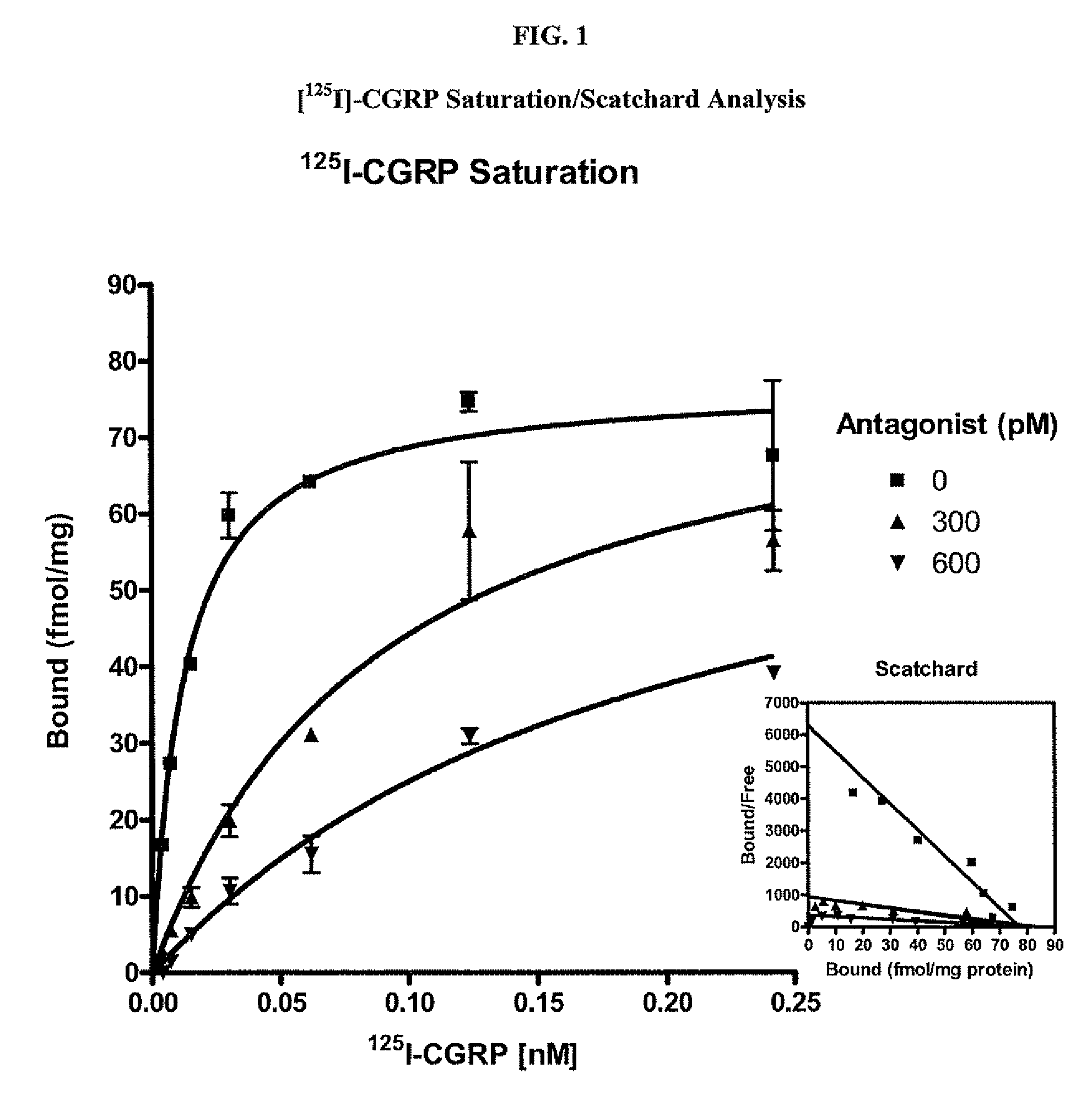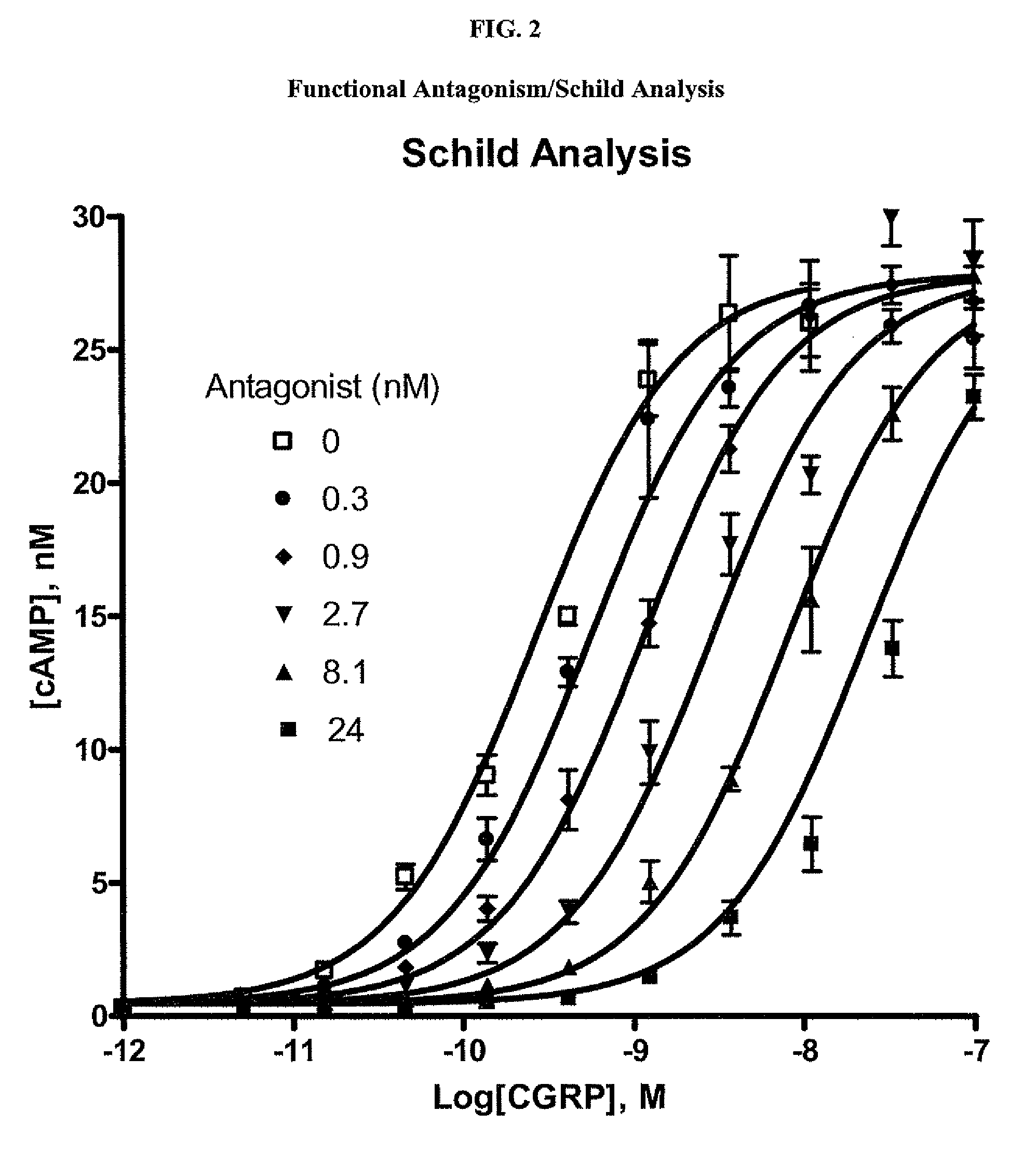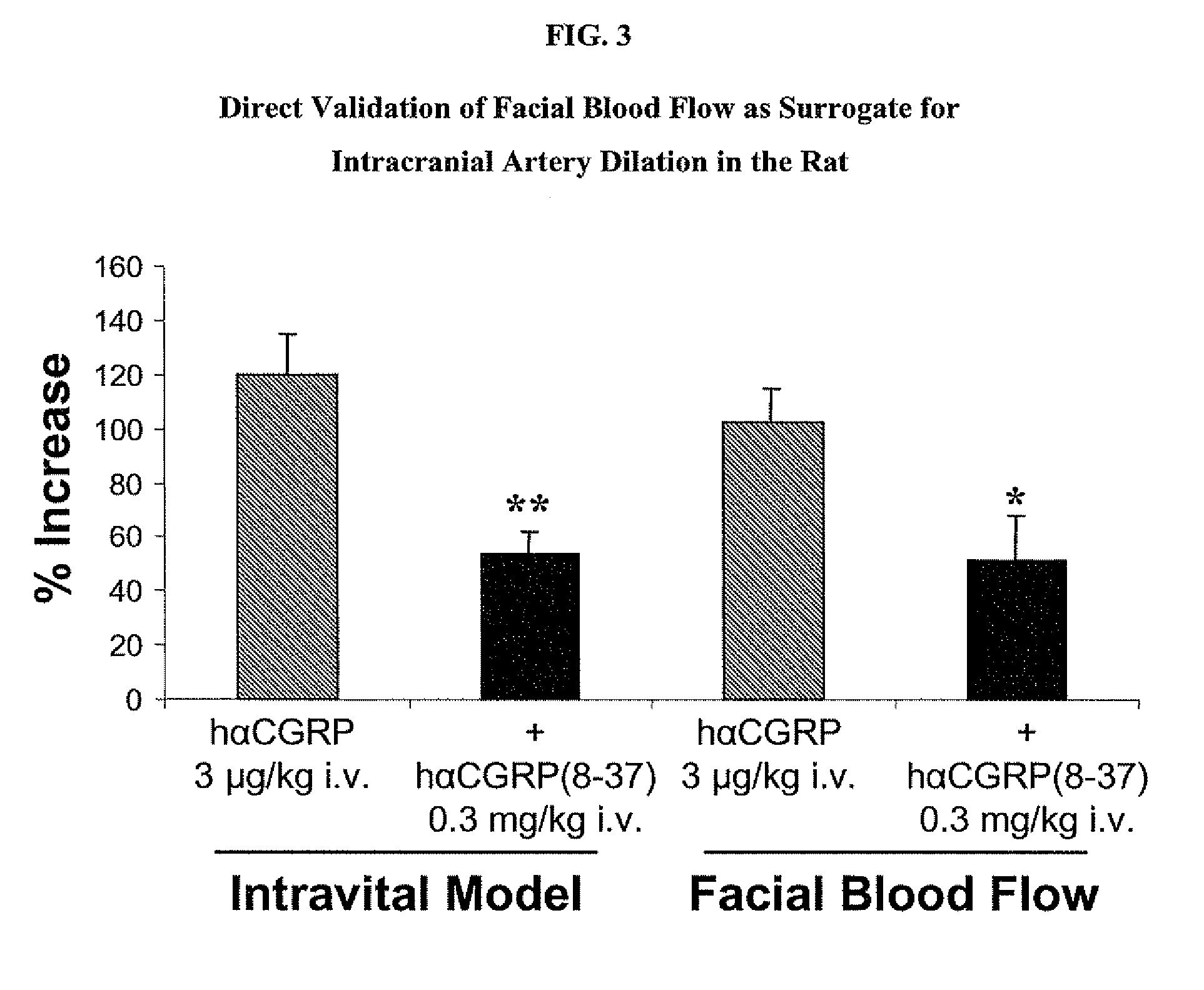CGRP receptor antagonists
a cgrp receptor and antagonist technology, applied in the field of compounds, can solve the problems of lack of molecular evidence and cgrp2 receptor
- Summary
- Abstract
- Description
- Claims
- Application Information
AI Technical Summary
Benefits of technology
Problems solved by technology
Method used
Image
Examples
example 1
[0125]
[0126]5-(2,3-difluorophenyl)-2-oxocycloheptyl 4-(2-oxo-2,3-dihydro-1H-imidazo[4,5-b]pyridin-1-yl)piperidine-1-carboxylate. In an oven-dried 50 mL round-bottomed flask (t=g) was added 5-(2,3-difluorophenyl)-2-hydroxycycloheptanone (22 mg, 0.092 mmol) and 4-Nitrophenyl chloroformate (20.30 mg, 0.101 mmol) in THF (3 mL) to give a colorless solution. DMAP (15.66 mg, 0.128 mmol) was added, and the mixture was stirred at room temperature for 3 hours. TLC showed a new less polar spot (more polar than the chloride) but mainly starting material. Allowed reaction to stir overnight for 24 hours. To the above reaction mixture was added 1-(piperidin-4-yl)-1H-imidazo[4,5-b]pyridin-2(3H)-one (53.6 mg, 0.184 mmol), followed by Hunig's Base (0.040 mL, 0.230 mmol). The resulted mixture was stirred at room temperature overnight. LCMS showed two close small peaks which has the MW of 484. 22 h: It was diluted with water and extracted with EtOAc. The organic layer was washed 3 times with water, bri...
example 2
[0145]
[0146](6,9-anti)-6-(2,3-difluorophenyl)-6,7,8,9-tetrahydro-5H-cyclohepta[b]pyridin-9-yl 4-(2-oxo-2,3-dihydro-1H-imidazo [4,5-b]pyridin-1-yl)piperidine-1-carboxylate. In a 100 mL round-bottomed flask (t=g) was added (6R,9R)-6-(2,3-difluorophenyl)-6,7,8,9-tetrahydro-5H-cyclohepta[b]pyridin-9-ol (22.2 mg, 0.081 mmol) (azeotroped with dry benzene) and 4-nitrophenyl 4-(2-oxo-2,3-dihydro-1H-imidazo[4,5-b]pyridin-1-yl)piperidine-1-carboxylate (93 mg, 0.242 mmol) in THF (3 mL) to give a tan suspension. NaH (19.35 mg, 0.806 mmol) (excess) was added in one portion. The mixture was stirred under nitrogen at room temperature overnight. 18 h: LCMS showed complete conversion. It was quenched with water (gas evolves!) and extracted with EtOAc. The layers were separated and the aqueous layer was extracted with EtOAc (LCMS showed no product in the aqueous). The combined organic layers were washed with brine, dried with Na2SO4, and concentrated. Purification by FCC up to 8% MeOH / CH2Cl2 afforded...
example 3
[0147]
[0148](6,9-anti)-6-(2,3-difluorophenyl)-6,7,8,9-tetrahydro-5H-cyclohepta[b]pyridin-9-yl 4-(2-oxo-4,5-dihydro-1H-benzo[d][1,3]diazepin-3(2H)-yl)piperidine-1-carboxylate. In a 100 mL round-bottomed flask (t=g) was added (6R,9R)-6-(2,3-difluorophenyl)-6,7,8,9-tetrahydro-5H-cyclohepta[b]pyridin-9-ol (13.5 mg, 0.049 mmol) (azeotroped with dry benzene) and 4-nitrophenyl 4-(2-oxo-4,5-dihydro-1H-benzo[d][1,3]diazepin-3 (2H)-yl)piperidine-1-carboxylate (60.4 mg, 0.147 mmol) in THF (2 mL) to give a tan suspension. NaH (11.77 mg, 0.490 mmol) (excess) was added in one portion. The mixture was stirred under nitrogen at room temperature overnight. 18 h: LCMS showed complete conversion. It was quenched with water (gas evolves!) and extracted with EtOAc. The layers were separated and the aqueous layer was extracted with EtOAc. The combined organic layers were washed with brine, dried with Na2SO4, and concentrated. Purification by FCC up to 8% MeOH / CH2Cl2 afforded the product as a white powder...
PUM
 Login to View More
Login to View More Abstract
Description
Claims
Application Information
 Login to View More
Login to View More - R&D
- Intellectual Property
- Life Sciences
- Materials
- Tech Scout
- Unparalleled Data Quality
- Higher Quality Content
- 60% Fewer Hallucinations
Browse by: Latest US Patents, China's latest patents, Technical Efficacy Thesaurus, Application Domain, Technology Topic, Popular Technical Reports.
© 2025 PatSnap. All rights reserved.Legal|Privacy policy|Modern Slavery Act Transparency Statement|Sitemap|About US| Contact US: help@patsnap.com



